Wilpattu National Park

Wilpattu National Park Home / Wilpattu National Park Wilpattu National Park Location Type Area Wilpattu National Park Safari Anuradhapura Wilpattu: Sri Lanka’s Largest and Oldest National Park Wilpattu National Park, located in the northwestern part of Sri Lanka, is the country’s largest and one of its most pristine wildlife sanctuaries. Spanning over 1,317 square kilometers, Wilpattu is known for its unique “villus” (natural lakes), which attract a diverse range of wildlife, including leopards, elephants, sloth bears, crocodiles, and over 200 species of birds. Unlike other parks, Wilpattu offers a more serene and less crowded safari experience, making it ideal for nature lovers and photographers. Why Visit Wilpattu? 1. Leopard Safari – A Hidden Kingdom of Big Cats Wilpattu is one of the best places in Sri Lanka to see the elusive Sri Lankan leopard. The park’s vast, untouched wilderness makes it a prime habitat for these big cats. Here, you can experience: High chances of spotting leopards resting near waterholes or on tree branches Expert-guided safaris for tracking these majestic predators Fewer crowds, allowing for an intimate wildlife encounter 2. Elephant Encounters – Gentle Giants in the Wild Although Wilpattu is not as famous for elephants as Udawalawe, it is still home to a healthy population of Sri Lankan elephants. You can witness: Elephants bathing in the villus during the dry season Lone bulls wandering through the forests Herds grazing peacefully in the open grasslands 3. Sloth Bears – One of the Best Places to Spot Them Wilpattu is one of the top locations in Sri Lanka to see the rare Sri Lankan sloth bear. If you’re lucky, you might spot: Bears emerging in the early morning or late afternoon Cubs clinging to their mothers’ backs These nocturnal creatures foraging for fruits and termites 4. Unique “Villus” – A Distinctive Wetland Ecosystem Wilpattu is named after its many “villus” (shallow natural lakes), which play a crucial role in the park’s ecosystem. These water bodies provide: A vital source of water for wildlife, increasing chances of animal sightings Stunning reflections of the sky, making them perfect for photography A serene and scenic contrast to the dense jungle surroundings 5. Birdwatching Paradise – A Haven for Avian Enthusiasts With over 200 recorded bird species, Wilpattu is a must-visit for birdwatchers. Look out for: The majestic white-bellied sea eagle and grey-headed fish eagle Colorful species such as kingfishers, bee-eaters, and paradise flycatchers Rare wetland birds near the villus, including painted storks and pelicans 6. Crocodile Spotting – The Silent Predators Wilpattu is home to both mugger crocodiles and saltwater crocodiles, which can be found: Lurking in the waters of the park’s many lakes and villus Basking on riverbanks in the sun Camouflaged in the marshes, waiting for their prey 7. Ancient History – A Park Steeped in Legends Wilpattu is not just about wildlife; it is also rich in history and mythology. Some notable sites include: Kuveni’s Palace – Believed to be the home of Queen Kuveni, a legendary figure in Sri Lankan history Old Buddhist ruins hidden within the jungle, offering a glimpse into Sri Lanka’s ancient past Best Time to Visit Wilpattu The best time to visit Wilpattu is from February to October, when the weather is dry, and wildlife is easier to spot near water sources. The park remains open throughout the year, but safaris can be challenging during the heavy rains of November to January. How to Get to Wilpattu By Road: Wilpattu is located 180 km from Colombo, and the drive takes around 4 hours via the Puttalam-Anuradhapura Road. By Train: The nearest train stations are in Puttalam and Anuradhapura, followed by a taxi ride to the park. By Bus: Direct buses run from Colombo to Puttalam or Anuradhapura, from where you can hire a vehicle to Wilpattu. Where to Stay in Wilpattu Wilpattu offers a range of accommodation options, including: Luxury safari lodges with guided wildlife experiences Eco-friendly glamping sites for a comfortable wilderness stay Budget guesthouses in Puttalam and Anuradhapura for travelers on a budget Experience the Untamed Beauty of Wilpattu Wilpattu National Park offers a raw and immersive safari experience unlike any other in Sri Lanka. With its vast wilderness, unique villus, and diverse wildlife, this park is a paradise for adventure seekers, wildlife photographers, and nature enthusiasts. Whether you’re hoping to see a leopard, a sloth bear, or simply enjoy the tranquility of the jungle, Wilpattu promises an unforgettable journey into the wild. Related Tours Packages Tailor Made Tours Packages Mystical Sri Lanka Packages Legendary Ramayana Trail Packages Tranquility & Wellness Packages Luxury Golf Hideaway Tailor Made Tours Mystical Sri Lanka Legendary Ramayana Trail Tranquility & Wellness Luxury Golf Hideaway Click On Map to Navigate Captivating TripAdvisor Display Reviews
Udawalawa
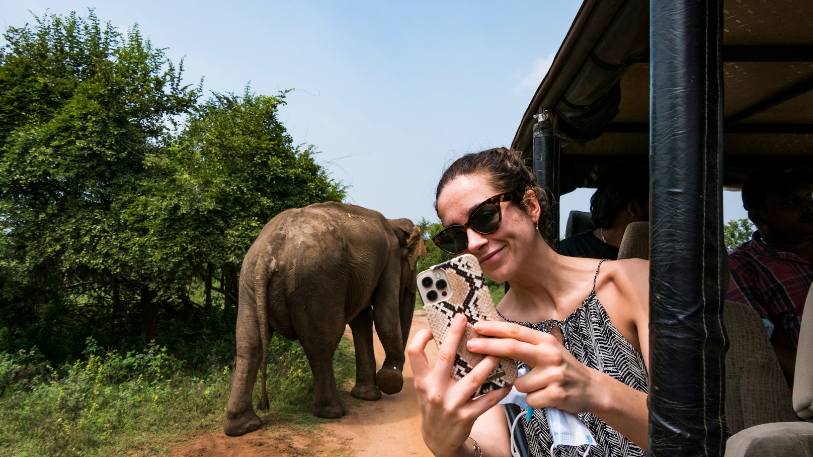
Udawalawa Home / Udawalawa Udawalawa Location Type Area Udawalawa Safari Ratnapura District Udawalawe: Sri Lanka’s Premier Elephant Safari Destination Udawalawe National Park, located in southern Sri Lanka, is one of the best places in Asia to see wild elephants up close. Covering 308 square kilometers, this park is home to a thriving elephant population, along with leopards, crocodiles, deer, and a diverse range of bird species. With its open landscapes and scenic water bodies, Udawalawe offers an incredible safari experience for nature and wildlife lovers. Why Visit Udawalawe? 1. Elephant Safari – Witness Gentle Giants in the Wild Udawalawe is famous for its large elephant herds, making it one of the best places to observe these magnificent creatures in their natural habitat. You can experience: Close-up encounters with wild elephants near lakes and waterholes Baby elephants playing under the watchful eyes of their mothers Herds roaming freely across the grasslands, especially during early morning and late afternoon safaris 2. Udawalawe Elephant Transit Home – A Haven for Orphaned Elephants This government-run facility rescues and rehabilitates orphaned baby elephants before releasing them back into the wild. A visit here allows you to: Watch baby elephants being fed and cared for Learn about Sri Lanka’s elephant conservation efforts See these young elephants in a semi-natural environment before they are reintroduced to Udawalawe National Park 3. Leopard Spotting – A Rare but Thrilling Experience While not as common as in Yala, Udawalawe is home to a small population of Sri Lankan leopards. With some luck, you might: Spot a leopard resting on a tree branch See fresh paw prints on the safari trails Witness one stalking prey in the tall grass 4. Birdwatching Paradise – Over 200 Bird Species Udawalawe is a birdwatcher’s dream, featuring a mix of resident and migratory birds. Keep an eye out for: The striking Sri Lankan junglefowl (Sri Lanka’s national bird) Majestic eagles and hawks soaring above the park Colorful bee-eaters, kingfishers, and storks near water bodies 5. Crocodiles and Other Reptiles – Ancient Predators in the Park Udawalawe’s wetlands and rivers are home to both mugger and saltwater crocodiles. You can often see them: Sunbathing on the banks of the Udawalawe Reservoir Swimming stealthily in the park’s lagoons and waterways Hunting fish, birds, and smaller animals in their territory 6. The Stunning Udawalawe Reservoir – A Scenic Safari Highlight At the heart of the park lies the Udawalawe Reservoir, which serves as a vital water source for wildlife. The reservoir offers: Beautiful sunrise and sunset views over the water A gathering spot for elephants, buffaloes, and birds Breathtaking photography opportunities, especially at dusk Best Time to Visit Udawalawe The park is open year-round, but the best time for wildlife sightings is during the dry season, from May to September, when animals gather around water sources. How to Get to Udawalawe By Road: Udawalawe is about 180 km from Colombo, taking 3.5 to 4 hours via the Southern Expressway. By Train: The nearest train station is in Ella or Haputale, followed by a taxi or bus ride to the park. By Bus: Direct buses run from Colombo, Ella, and Matara to Udawalawe town. Where to Stay in Udawalawe Udawalawe offers various accommodation options, from budget-friendly guesthouses to luxurious eco-lodges, including: Safari camps and glamping sites for an immersive jungle experience Eco-friendly resorts with breathtaking views of the surrounding wilderness Budget hotels and homestays near the park entrance Discover the Wild Beauty of Udawalawe Udawalawe National Park is the ultimate destination for elephant lovers and wildlife enthusiasts. Whether you’re exploring the park on a safari, watching baby elephants at the transit home, or admiring the stunning landscapes, Udawalawe offers a truly unforgettable adventure into Sri Lanka’s rich wildlife heritage. Related Tours Packages Tailor Made Tours Packages Mystical Sri Lanka Packages Legendary Ramayana Trail Packages Tranquility & Wellness Packages Luxury Golf Hideaway Tailor Made Tours Mystical Sri Lanka Legendary Ramayana Trail Tranquility & Wellness Luxury Golf Hideaway Click On Map to Navigate Captivating TripAdvisor Display Reviews
Yala
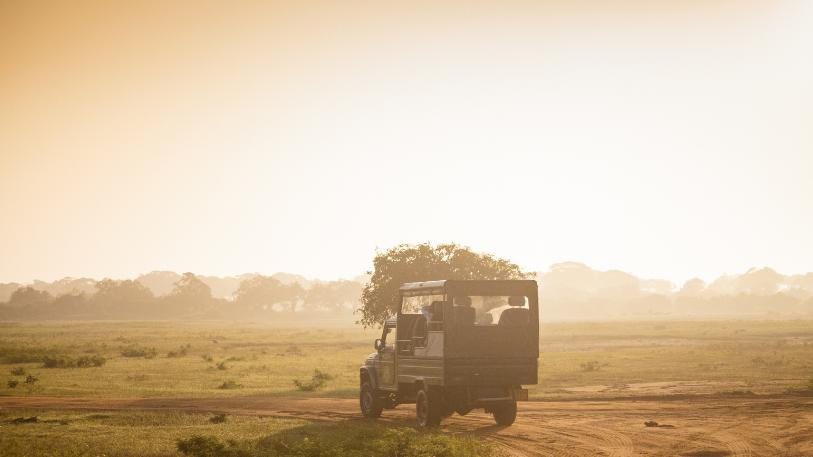
Yala Home / Yala Yala Location Type Area Yala Safari Southeast Sri Lanka. Yala: Sri Lanka’s Ultimate Wildlife Safari Destination Yala National Park, located in southeastern Sri Lanka, is the country’s most famous wildlife sanctuary. Covering nearly 979 square kilometers, Yala is home to the highest density of leopards in the world, along with elephants, sloth bears, crocodiles, and over 200 bird species. Whether you’re a wildlife enthusiast or a nature lover, Yala offers an unforgettable safari experience. Why Visit Yala? 1. Leopard Safari – Spot the King of Yala Yala is the best place in the world to see leopards in the wild, offering: The highest leopard density of any national park Early morning and evening game drives for the best sightings Expert safari guides to track and locate these elusive big cats 2. Elephant Encounters – Majestic Giants in Their Natural Habitat Yala is home to large herds of Sri Lankan elephants, and you can witness: Elephants roaming freely in their natural environment Baby elephants playing in waterholes Herds crossing the safari trails during early morning and dusk 3. Sloth Bears – A Rare and Unique Sight The Sri Lankan sloth bear is an endangered species found in Yala. You might spot: These shaggy, nocturnal mammals foraging for fruits and termites Cubs clinging to their mothers’ backs Bears emerging from the dense forests in the early morning 4. Exotic Birdwatching – A Paradise for Bird Lovers With over 200 bird species, Yala is a dream destination for birdwatchers. Look out for: Peacocks dancing at sunrise Painted storks, hornbills, and flamingos Migratory birds arriving from November to April 5. Crocodile Spotting – The Ancient Predators Yala is home to both mugger crocodiles and saltwater crocodiles, often seen: Basking on riverbanks in the sun Stealthily swimming in lakes and lagoons Hunting for fish and other prey in the park’s wetlands 6. Sithulpawwa Rock Temple – A Sacred Sanctuary in the Wild Sithulpawwa, an ancient Buddhist monastery inside Yala, offers: Stunning rock carvings and cave paintings dating back over 2,000 years A peaceful setting for meditation Panoramic views of Yala’s vast wilderness from the temple summit 7. Patanangala Beach – Untouched Coastal Beauty Located within Yala, Patanangala Beach features: A rugged, unspoiled coastline with golden sand The Indian Ocean meeting the wilderness, a rare natural spectacle A peaceful spot for photography and relaxation (but swimming is not allowed due to strong currents) 8. Tissa Wewa & Kataragama – Cultural and Spiritual Sites Near Yala Tissa Wewa: An ancient reservoir near Tissamaharama, ideal for birdwatching and sunset views. Kataragama Temple: A sacred pilgrimage site dedicated to Lord Kataragama, attracting Buddhist, Hindu, and indigenous devotees. Best Time to Visit Yala The best time to visit Yala is from February to July, when water levels are low, making it easier to spot wildlife near lakes and waterholes. The park is closed for maintenance from September to mid-October. How to Get to Yala By Road: Yala is 260 km from Colombo and takes 4-5 hours via the Southern Expressway. By Train: The nearest train station is in Matara, followed by a scenic drive to Yala. By Air: Domestic flights to Weerawila Airport (near Tissamaharama) offer the fastest route to Yala. Where to Stay in Yala Yala offers a range of accommodation options, including: Luxury safari lodges with private jungle experiences Eco-friendly glamping sites for a wilderness adventure Budget guesthouses in Tissamaharama, just outside the park Experience the Wild Side of Sri Lanka A visit to Yala promises an unforgettable adventure, combining thrilling safaris, breathtaking landscapes, and rich biodiversity. Whether you’re searching for leopards, elephants, or rare birds, Yala offers an up-close experience with Sri Lanka’s untamed wilderness. Related Tours Packages Tailor Made Tours Packages Mystical Sri Lanka Packages Legendary Ramayana Trail Packages Tranquility & Wellness Packages Luxury Golf Hideaway Tailor Made Tours Mystical Sri Lanka Legendary Ramayana Trail Tranquility & Wellness Luxury Golf Hideaway Click On Map to Navigate Captivating TripAdvisor Display Reviews
Kandy
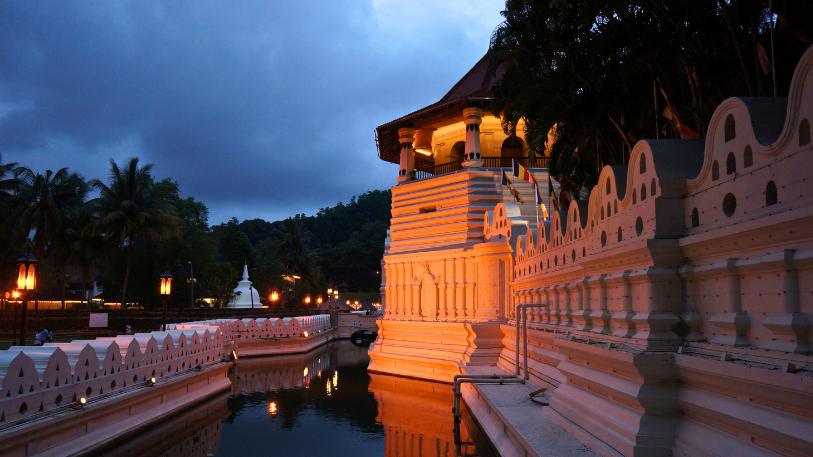
Kandy Home / Kandy Kandy Location Type Area Kandy Historical and Religious Central Sri Lanka Kandy: The Cultural Heart of Sri Lanka Kandy, the last royal capital of Sri Lanka, is a city rich in history, culture, and breathtaking natural beauty. Nestled in the central highlands, about 115 km from Colombo, Kandy is home to the revered Temple of the Tooth Relic, lush tea plantations, and scenic landscapes. This UNESCO World Heritage Site offers a perfect blend of spirituality, heritage, and nature. Why Visit Kandy? 1. Temple of the Tooth Relic – Sri Lanka’s Holiest Shrine The Sri Dalada Maligawa, or Temple of the Tooth Relic, is Kandy’s most sacred site. It houses: The revered tooth relic of Lord Buddha Magnificent Kandyan architecture and intricate carvings Daily Buddhist rituals and vibrant religious processions The Esala Perahera, Sri Lanka’s grandest cultural festival (held in July/August) 2. Kandy Lake – A Scenic Urban Oasis Located in the heart of the city, Kandy Lake is a peaceful retreat offering: A picturesque lakeside walk with stunning city views Birdwatching opportunities and glimpses of local wildlife A tranquil setting for photography and relaxation 3. Peradeniya Botanical Gardens – A Paradise of Flora One of Asia’s most beautiful botanical gardens, Peradeniya is known for: Over 4,000 species of plants, including rare orchids and giant bamboo The famous Royal Palm Avenue and the massive Javan fig tree A scenic suspension bridge over the Mahaweli River 4. Bahirawakanda Vihara Buddha Statue – Panoramic Views of Kandy This giant white Buddha statue sits atop Bahirawakanda Hill and offers: 360-degree views of Kandy and its surroundings A peaceful atmosphere for meditation and photography A short yet rewarding hike or tuk-tuk ride to the top 5. Udawattakele Forest Reserve – A Hidden Jungle in the City Located behind the Temple of the Tooth, Udawattakele is a nature reserve perfect for: Trekking through dense jungle trails Spotting monkeys, deer, and exotic birds Exploring ancient Buddhist meditation caves 6. Kandy Viewpoint – A Spectacular Sunset Spot Just a short drive from the city center, Kandy Viewpoint offers: A breathtaking panoramic view of Kandy and its lake A perfect location for sunset photography A chance to see the city lights twinkling at night 7. Ceylon Tea Museum – Explore Sri Lanka’s Tea Heritage Located in Hantana, the Ceylon Tea Museum provides insights into Sri Lanka’s tea industry with: Exhibits on tea production and colonial-era machinery Tea tasting sessions with some of the world’s finest Ceylon tea A scenic hilltop setting overlooking lush tea plantations 8. Embekke, Lankatilaka & Gadaladeniya Temples – Kandyan Architectural Marvels Kandy is home to three historic temples showcasing impressive craftsmanship: Embekke Temple – Known for its exquisite wood carvings Lankatilaka Temple – A blend of Kandyan and South Indian architecture Gadaladeniya Temple – Features stunning stone and brickwork 9. Knuckles Mountain Range – A Hiker’s Paradise A UNESCO-listed biodiversity hotspot, the Knuckles Range is perfect for: Trekking through lush rainforests and waterfalls Exploring hidden villages and ancient caves Spotting rare wildlife and breathtaking mountain views 10. Kandy’s Vibrant Markets and Street Food For a taste of local life, visit: Kandy Central Market – A bustling spot for fresh produce, spices, and souvenirs Street food stalls – Try authentic Sri Lankan delicacies like egg hoppers, samosas, and kottu roti Best Time to Visit Kandy The best time to visit Kandy is from December to April when the weather is pleasant. If you want to experience the Esala Perahera festival, plan your visit in July or August. How to Get to Kandy By Train: The scenic train ride from Colombo to Kandy offers stunning hill country views. By Road: Kandy is 115 km from Colombo and takes 3-4 hours via the Kandy-Colombo highway. By Bus: Frequent buses, including AC express services, connect Kandy with major cities. Where to Stay in Kandy Kandy offers accommodations ranging from luxury hotels with lake views to budget-friendly guesthouses set amidst tea plantations. Many options provide easy access to the city’s key attractions. Experience the Magic of Kandy Kandy is the cultural soul of Sri Lanka, where history, spirituality, and nature come together in perfect harmony. Whether you’re exploring its sacred temples, scenic landscapes, or tea plantations, Kandy promises an unforgettable experience in the heart of the island. Related Tours Packages Tailor Made Tours Packages Mystical Sri Lanka Packages Legendary Ramayana Trail Packages Tranquility & Wellness Packages Luxury Golf Hideaway Tailor Made Tours Mystical Sri Lanka Legendary Ramayana Trail Tranquility & Wellness Luxury Golf Hideaway Click On Map to Navigate Captivating TripAdvisor Display Reviews
Galle
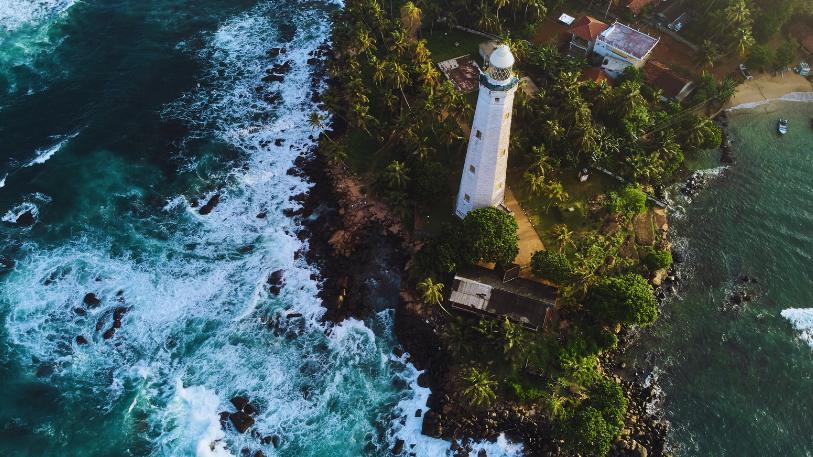
Galle Home / Galle Galle Location Type Area Galle Nightlife Southwest Galle: Sri Lanka’s Historic Coastal Gem Galle, a charming coastal city on Sri Lanka’s southwestern coast, is renowned for its rich colonial history, stunning beaches, and vibrant culture. Located about 120 km from Colombo, Galle is a must-visit destination for travelers seeking a blend of history, seaside relaxation, and adventure. Why Visit Galle? 1. Galle Fort – A UNESCO World Heritage Site Galle Fort, built by the Portuguese in the 16th century and later fortified by the Dutch, is the city’s crown jewel. Explore its: Historic cobblestone streets lined with colonial architecture Boutique shops, art galleries, and charming cafés Iconic landmarks like the Galle Lighthouse and Dutch Reformed Church 2. Unawatuna Beach – A Tropical Paradise Just 10 minutes from Galle, Unawatuna Beach is famous for its: Golden sands and crystal-clear waters Safe swimming areas and beachfront restaurants Snorkeling and diving opportunities with vibrant marine life 3. Jungle Beach – A Secluded Escape For a quieter experience, Jungle Beach offers: A hidden cove surrounded by lush greenery Calm, shallow waters perfect for swimming A peaceful atmosphere away from the crowds 4. Dutch Reformed Church – A Glimpse into History This historic church inside Galle Fort dates back to the 18th century and features: Beautiful stained glass windows and intricate wooden furniture A fascinating cemetery with Dutch-era tombstones A peaceful, reflective atmosphere 5. Galle Lighthouse – The City’s Iconic Landmark Standing tall at the edge of Galle Fort, the lighthouse provides: Stunning panoramic views of the Indian Ocean A perfect spot for photography and sunset views A glimpse into Sri Lanka’s maritime history 6. National Maritime Museum – Discover Galle’s Nautical Past Located within the Galle Fort, this museum showcases: Artifacts from shipwrecks along Sri Lanka’s coast Traditional fishing tools and naval equipment Interactive exhibits on Sri Lanka’s maritime trade history 7. Rumassala Hill – Mythology and Scenic Views Rumassala, a hill near Unawatuna, is linked to the Ramayana legend and offers: Breathtaking views of Galle Bay and the coastline The Japanese Peace Pagoda, a serene Buddhist monument A great hiking spot with lush greenery 8. Whale Watching in Mirissa – A Short Trip Away Just an hour from Galle, Mirissa is a top destination for: Watching blue whales, sperm whales, and dolphins Exciting boat tours from November to April A chance to see the ocean’s gentle giants up close 9. Koggala Lake – A Nature Lover’s Retreat A short drive from Galle, Koggala Lake offers: Boat safaris through mangroves and small islands Visits to cinnamon farms and Buddhist temples A peaceful setting for birdwatching and photography 10. Galle’s Vibrant Food Scene Galle is home to an array of restaurants serving delicious Sri Lankan and international cuisine. Popular spots include: The Tuna & The Crab – Famous for fresh seafood Elita Restaurant – A hidden gem for European dishes Poonie’s Kitchen – A must-visit for healthy, organic meals Best Time to Visit Galle The best time to visit Galle is from December to April, when the weather is sunny, and the seas are calm. The monsoon season from May to October brings occasional rain but also lush greenery and fewer crowds. How to Get to Galle By Road: Galle is 120 km from Colombo, about 2–2.5 hours via the Southern Expressway. By Train: A scenic coastal train ride from Colombo to Galle offers breathtaking ocean views. By Bus: Regular AC and non-AC buses run between Colombo and Galle. Where to Stay in Galle Galle offers a range of accommodations, from luxury beachfront resorts to budget-friendly guesthouses inside Galle Fort. Many hotels provide ocean views, colonial charm, and modern comforts. Experience the Charm of Galle Galle is a city where history meets coastal beauty. Whether you’re exploring the iconic fort, relaxing on stunning beaches, or indulging in delicious seafood, Galle promises an unforgettable experience on Sri Lanka’s southwest coast. Related Tours Packages Tailor Made Tours Packages Mystical Sri Lanka Packages Legendary Ramayana Trail Packages Tranquility & Wellness Packages Luxury Golf Hideaway Tailor Made Tours Mystical Sri Lanka Legendary Ramayana Trail Tranquility & Wellness Luxury Golf Hideaway Click On Map to Navigate Captivating TripAdvisor Display Reviews
Mirissa
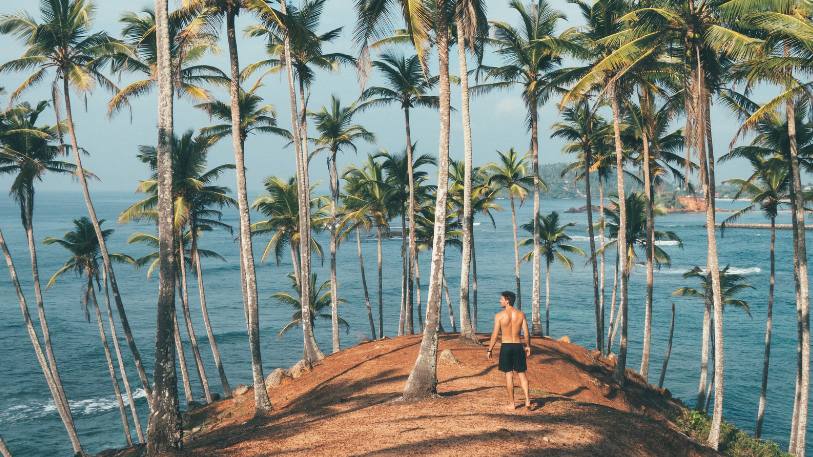
Mirissa Home / Mirissa Mirissa Location Type Area Mirissa Nightlife South Coast Mirissa: Sri Lanka’s Tropical Paradise Mirissa, a stunning beach town on Sri Lanka’s southern coast, is famous for its pristine beaches, whale watching, and vibrant nightlife. Located 150 km from Colombo, Mirissa is a must-visit destination for those seeking a relaxing beach getaway with opportunities for adventure and marine exploration. Why Visit Mirissa? 1. Mirissa Beach – A Slice of Heaven Mirissa Beach is one of Sri Lanka’s most picturesque beaches, featuring golden sand, swaying palm trees, and turquoise waters. It is perfect for: Swimming and sunbathing in a peaceful tropical setting Beachfront restaurants serving fresh seafood and cocktails Stunning sunsets that paint the sky in breathtaking colors 2. Whale Watching – A Once-in-a-Lifetime Experience Mirissa is Sri Lanka’s top destination for whale watching, offering the chance to see: Blue whales – The largest animals on Earth Sperm whales and Bryde’s whales Pods of playful dolphins swimming alongside boats The best time for whale watching is from November to April, when the ocean is calm and sightings are frequent. 3. Coconut Tree Hill – Instagram’s Favorite Spot Coconut Tree Hill is a famous viewpoint in Mirissa, known for its picturesque cluster of palm trees overlooking the ocean. It’s a perfect spot for: Breathtaking sunrise and sunset views Photography and Instagram-worthy shots Relaxing with panoramic ocean scenery 4. Surfing – Ride the Waves Mirissa offers great surf breaks suitable for beginners and experienced surfers. Popular surf spots include: Mirissa Beach Break – Ideal for beginners Secret Beach Surf Point – A hidden gem for surfers Weligama Bay (just 10 minutes away) – A top spot for surf lessons The surf season runs from November to April, when the waves are perfect for riding. 5. Secret Beach – A Hidden Paradise Secret Beach is a secluded cove offering a quiet escape from the crowds. It features: Crystal-clear waters, ideal for swimming A peaceful, natural setting with minimal crowds A beachside bar serving fresh coconuts and snacks 6. Parrot Rock – A Natural Viewpoint Parrot Rock is a small rock formation near Mirissa Beach, providing panoramic views of the coastline. Climbing to the top offers: Spectacular sunrise and sunset views A unique perspective of Mirissa Beach A chance to spot marine life in the shallow waters below 7. Snorkeling and Diving – Explore the Underwater World Mirissa offers fantastic snorkeling and diving spots where you can see: Colorful coral reefs teeming with tropical fish Sea turtles gliding through the water Shipwreck sites and deep-sea marine life The best time for snorkeling and diving is from December to April, when visibility is high. 8. Boat Tours to Taprobane Island A short boat ride from Mirissa takes you to Taprobane Island, a private island with a stunning villa. Visitors can: Explore the island’s pristine beaches Enjoy luxury dining with ocean views Experience an exclusive getaway 9. Visit Weligama – A Surfer’s Haven Just 10 minutes from Mirissa, Weligama is a top surfing destination with: Gentle waves perfect for beginners Numerous surf schools offering lessons A lively beach town atmosphere 10. Nightlife in Mirissa – Beachside Bars and Parties Mirissa offers a lively nightlife scene, featuring: Beach bars with live music Bonfire parties on the sand Cocktail lounges with ocean views Popular spots include Zephyr Restaurant & Bar and Petty Bar Mirissa. Best Time to Visit Mirissa The best time to visit is from November to April, when the weather is sunny, and the ocean is calm for water activities. The monsoon season, from May to October, brings higher waves and occasional rains. How to Get to Mirissa By Road: Mirissa is 150 km from Colombo, around 2.5 to 3 hours by car via the Southern Expressway. By Train: A scenic coastal train ride connects Colombo to Weligama, followed by a short tuk-tuk ride to Mirissa. By Bus: Direct buses run from Colombo and Galle to Mirissa. Where to Stay in Mirissa Mirissa offers a variety of accommodations, from budget guesthouses to luxury beachfront resorts. Many places provide stunning ocean views and direct beach access. Experience the Magic of Mirissa Mirissa is the ultimate tropical escape, combining relaxation, adventure, and breathtaking natural beauty. Whether you’re here to watch whales, ride the waves, or simply unwind on the beach, Mirissa promises an unforgettable experience on Sri Lanka’s southern coast. Related Tours Packages Tailor Made Tours Packages Mystical Sri Lanka Packages Legendary Ramayana Trail Packages Tranquility & Wellness Packages Luxury Golf Hideaway Tailor Made Tours Mystical Sri Lanka Legendary Ramayana Trail Tranquility & Wellness Luxury Golf Hideaway Click On Map to Navigate Captivating TripAdvisor Display Reviews
Hikkaduwa
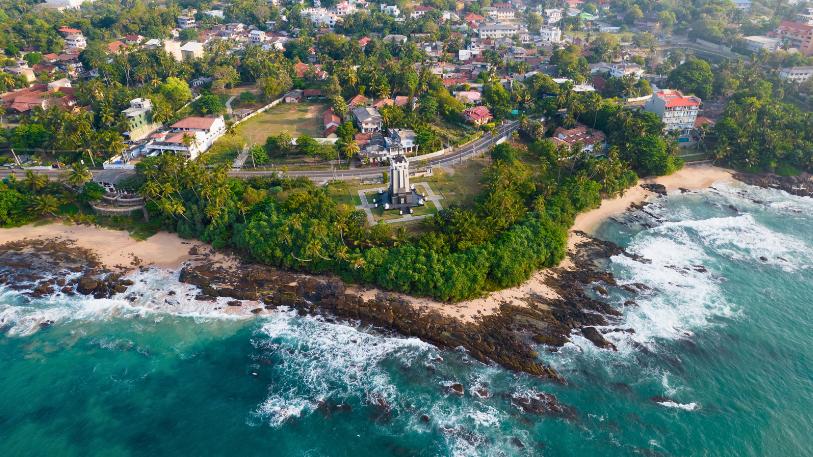
Hikkaduwa Home / Hikkaduwa Hikkaduwa Location Type Area Hikkaduwa Surfing Southwestern Hikkaduwa: Sri Lanka’s Beach Paradise Hikkaduwa, a vibrant coastal town on Sri Lanka’s southwest coast, is famous for its pristine beaches, thriving coral reefs, and exciting nightlife. Located just 98 km from Colombo, Hikkaduwa is a top tourist destination known for surfing, snorkeling, diving, and beachside relaxation. Whether you’re an adventure seeker or someone looking to unwind, Hikkaduwa offers the perfect tropical escape. Why Visit Hikkaduwa? 1. Hikkaduwa Beach – A Tropical Paradise Hikkaduwa Beach is one of Sri Lanka’s most beautiful beaches, attracting visitors with its golden sands, crystal-clear waters, and palm-fringed coastline. It is perfect for: Swimming and sunbathing under the tropical sun Beachfront dining with fresh seafood and stunning ocean views Vibrant nightlife with beach parties and music festivals 2. Surfing at Hikkaduwa – A Surfer’s Dream Hikkaduwa is a surfer’s paradise, offering consistent waves and surf-friendly conditions for both beginners and professionals. The best surf spots include: Main Reef – Ideal for experienced surfers Benny’s – Offers powerful waves for thrill-seekers Narigama Beach – A great spot for beginner surfers The surf season runs from November to April, when the waves are at their best. 3. Hikkaduwa Coral Sanctuary – A Snorkeler’s Delight Hikkaduwa is home to a vibrant coral reef ecosystem, protected as a Marine National Park. Snorkeling here lets you explore: Colorful coral formations teeming with marine life Tropical fish, including angelfish, parrotfish, and clownfish Sea turtles, often seen near the shore The best time for snorkeling is from December to April, when the waters are clear and calm. 4. Scuba Diving – Discover the Underwater World For diving enthusiasts, Hikkaduwa offers exciting dive sites featuring shipwrecks, reef walls, and marine biodiversity. Popular dive sites include: The Conch Shipwreck – A British steamship wreck from 1903 Goda Gala Diyamba – A deep reef with abundant marine life Hikkaduwa Gala – A rocky underwater landscape with caves and coral formations 5. Sea Turtle Hatchery and Conservation Center Hikkaduwa is a great place to learn about sea turtle conservation. Visit a turtle hatchery to: See baby turtles hatch and released into the sea Learn about efforts to protect endangered sea turtle species Observe adult turtles recovering from injuries 6. Glass-Bottom Boat Rides – A Unique Marine Experience For those who prefer to stay dry, a glass-bottom boat ride offers a chance to see the underwater world without getting wet. These boat rides allow you to: Observe colorful coral reefs and fish Spot sea turtles swimming gracefully Enjoy a relaxing cruise on the turquoise waters 7. Galle Fort – A Short Trip into History Just a 30-minute drive from Hikkaduwa, Galle Fort is a UNESCO World Heritage Site that offers: Colonial-era architecture, built by the Portuguese and Dutch Cobblestone streets lined with cafes, boutiques, and art galleries Spectacular sunset views over the Indian Ocean 8. Tsunami Honganji Vihara – A Memorial of Resilience This Buddhist temple and memorial honors the victims of the 2004 tsunami. It features a monumental Buddha statue, offering a place for reflection and remembrance. 9. River Safari at Madu Ganga A short trip from Hikkaduwa, the Madu Ganga River Safari offers a scenic boat ride through mangrove forests. Highlights include: Birdwatching – Spotting exotic birds and wildlife Visiting Cinnamon Island – Learning about traditional cinnamon production Fish therapy – A relaxing natural spa experience 10. Vibrant Nightlife and Beach Parties Hikkaduwa is one of Sri Lanka’s top nightlife destinations, featuring: Beach bars and live music venues DJ parties at beachside clubs Fire shows and cultural performances The festive atmosphere makes Hikkaduwa a favorite spot for party lovers. Best Time to Visit Hikkaduwa The best time to visit is from November to April, when the weather is sunny and dry, and the ocean is calm for water activities. The monsoon season, from May to October, brings rough seas and occasional heavy rains. How to Get to Hikkaduwa By Road: Hikkaduwa is 98 km from Colombo and takes around 2 hours by car. By Train: A scenic train ride along the coast connects Colombo to Hikkaduwa. By Bus: Regular buses run from Colombo and Galle to Hikkaduwa. Where to Stay in Hikkaduwa Hikkaduwa offers a wide range of accommodation, from budget-friendly hostels to luxury beachfront resorts. Many hotels provide ocean views, beach access, and water sports facilities. Experience the Magic of Hikkaduwa Hikkaduwa is the perfect blend of adventure, relaxation, and cultural experiences. Whether you’re here for the surf, the coral reefs, or the lively beach scene, this tropical paradise promises an unforgettable holiday on Sri Lanka’s southern coast. Related Tours Packages Tailor Made Tours Packages Mystical Sri Lanka Packages Legendary Ramayana Trail Packages Tranquility & Wellness Packages Luxury Golf Hideaway Tailor Made Tours Mystical Sri Lanka Legendary Ramayana Trail Tranquility & Wellness Luxury Golf Hideaway Click On Map to Navigate Captivating TripAdvisor Display Reviews
Polonnaruwa
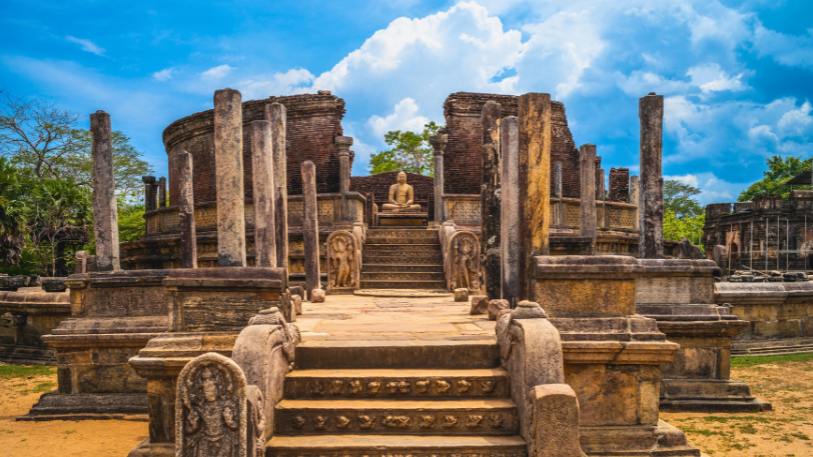
Polonnaruwa Home / Polonnaruwa Polonnaruwa Location Type Area Polonnaruwa North Central North Central Province Polonnaruwa: The Ancient Capital of Sri Lanka Polonnaruwa, one of Sri Lanka’s most fascinating ancient cities, is a UNESCO World Heritage Site that showcases the grandeur of Sri Lanka’s medieval past. Serving as the island’s capital from the 11th to the 13th century, Polonnaruwa is a treasure trove of well-preserved ruins, majestic stupas, intricate carvings, and ancient reservoirs. With its blend of history, culture, and scenic beauty, Polonnaruwa is an essential stop for travelers exploring Sri Lanka’s Cultural Triangle. Why Visit Polonnaruwa? 1. The Ancient City of Polonnaruwa – A Walk Through History Polonnaruwa’s archaeological ruins offer a glimpse into the golden age of Sri Lankan civilization. The royal palaces, temples, and colossal Buddha statues stand as a testament to the architectural and engineering brilliance of the ancient Sinhalese rulers. Must-visit sites include: Royal Palace of King Parakramabahu I – A once-magnificent seven-story palace Audience Hall – Features beautifully carved stone elephants Sacred Quadrangle (Dalada Maluwa) – Home to Sri Lanka’s most sacred relic shrines Shiva Devalaya – Hindu shrines reflecting South Indian influence 2. Gal Vihara – The Iconic Rock-Carved Buddhas One of the most famous sites in Polonnaruwa, Gal Vihara is a rock temple featuring four breathtaking Buddha statues carved into a single granite rock. These include: A seated Buddha in deep meditation A standing Buddha with a serene expression A reclining Buddha, representing Parinirvana (final enlightenment) The artistic mastery and spiritual aura of Gal Vihara make it one of the most revered Buddhist sites in Sri Lanka. 3. Parakrama Samudra – The Great Sea of Parakrama Built by King Parakramabahu I, this massive artificial reservoir spans over 2,500 hectares, providing a lifeline for agriculture in the region. It is an engineering marvel of ancient Sri Lanka, demonstrating the advanced irrigation systems used to sustain the kingdom. The lake’s scenic beauty makes it a great spot for birdwatching and sunset views. 4. Rankoth Vehera – The Majestic Dagoba Inspired by the famous Ruwanwelisaya Stupa in Anuradhapura, Rankoth Vehera is a massive 55-meter-tall stupa that remains an active place of Buddhist worship. Surrounded by a serene environment, it reflects the spiritual and architectural excellence of the Polonnaruwa era. 5. Lankatilaka Vihara – The Towering Image House Lankatilaka Vihara is a magnificent Buddhist shrine featuring a massive standing Buddha statue inside an elaborately decorated brick-walled structure. The temple’s intricate carvings and frescoes showcase the artistic grandeur of the ancient kingdom. 6. Thuparama Gedige – The Oldest Image House This unique stone temple is believed to be the only fully intact Gedige (vaulted shrine) from the Polonnaruwa period. The murals and Buddha statues inside provide insight into the fusion of Sinhalese and South Indian architectural styles. 7. Nissanka Latha Mandapaya – The Lotus Pavilion A beautifully ornate stone structure, this pavilion was used by King Nissanka Malla for chanting Buddhist scriptures. The lotus-shaped stone columns are a rare architectural feature, symbolizing purity and enlightenment. 8. Medirigiriya Vatadage – A Circular Relic Shrine Located just outside Polonnaruwa, Medirigiriya Vatadage is an exquisitely designed circular relic house, surrounded by four Buddha statues facing each cardinal direction. The site’s tranquil setting adds to its spiritual ambiance. 9. Wildlife Encounters in Minneriya and Kaudulla National Parks Polonnaruwa is close to two of Sri Lanka’s most famous wildlife reserves: Minneriya National Park – Famous for the “Gathering of Elephants”, one of the largest elephant gatherings in the world Kaudulla National Park – Offers thrilling jeep safaris to see elephants, deer, and exotic birds in their natural habitat 10. Cycling Through the Ruins – A Unique Experience Exploring Polonnaruwa by bicycle is a popular and enjoyable way to discover the ancient city. The flat terrain, well-preserved ruins, and scenic surroundings make cycling a memorable and immersive experience. Best Time to Visit Polonnaruwa The best time to visit is from May to September, when the weather is dry and sunny, making it perfect for sightseeing and outdoor activities. The monsoon season (October to January) brings occasional heavy rains, but the ruins remain accessible. How to Get to Polonnaruwa By Road: Polonnaruwa is 220 km from Colombo and takes around 5–6 hours by car or bus. By Train: Trains run from Colombo to Polonnaruwa, offering a scenic journey through the countryside. By Air: Domestic flights to Sigiriya Airport, followed by a short drive, provide a faster travel option. Where to Stay in Polonnaruwa Polonnaruwa offers a range of accommodation options, from budget guesthouses to luxury eco-resorts. Many hotels are located near the ruins, providing easy access to historical sites. Step Back in Time in Polonnaruwa Polonnaruwa is a destination where history comes alive. Whether you’re an architecture enthusiast, history lover, or spiritual seeker, this ancient city offers an unforgettable journey into Sri Lanka’s rich cultural and archaeological heritage. Related Tours Packages Tailor Made Tours Packages Mystical Sri Lanka Packages Legendary Ramayana Trail Packages Tranquility & Wellness Packages Luxury Golf Hideaway Tailor Made Tours Mystical Sri Lanka Legendary Ramayana Trail Tranquility & Wellness Luxury Golf Hideaway Click On Map to Navigate Captivating TripAdvisor Display Reviews
Anuradhapura
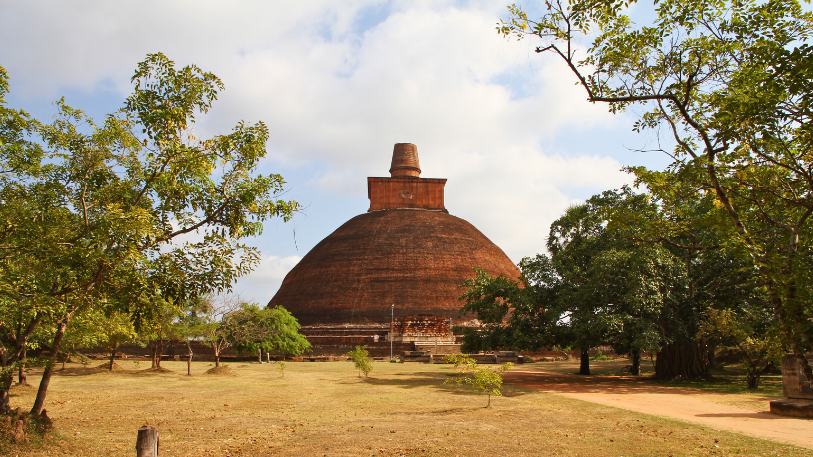
Anuradhapura Home / Anuradhapura Anuradhapura Location Type Area Anuradhapura North Central North Central Province Anuradhapura: The Sacred City of Sri Lanka Anuradhapura, one of Sri Lanka’s most revered UNESCO World Heritage Sites, is a city of ancient ruins, sacred Buddhist monuments, and historical significance. As the first capital of Sri Lanka, dating back to the 4th century BC, Anuradhapura was the heart of the island’s Buddhist civilization for over 1,300 years. Today, it remains a spiritual and cultural treasure, drawing pilgrims and history enthusiasts from around the world. Why Visit Anuradhapura? 1. Sri Maha Bodhi – The Oldest Living Tree with a Recorded History At the heart of Anuradhapura stands the Jaya Sri Maha Bodhi, a sacred fig tree grown from a cutting of the original Bodhi Tree under which the Buddha attained enlightenment. Planted in 288 BC, it is the oldest historically documented tree in the world and a major pilgrimage site. 2. Ruwanwelisaya – The Great Stupa One of the most magnificent dagobas in Sri Lanka, the Ruwanwelisaya Stupa was built by King Dutugemunu in 140 BC. Towering at 103 meters, this dazzling white stupa is an iconic symbol of Sri Lanka’s Buddhist heritage. Thousands of pilgrims visit daily to pay their respects and experience its tranquil and sacred atmosphere. 3. Jetavanaramaya – The Tallest Brick Stupa in the World Once the third tallest structure in the world (after the pyramids of Giza), the Jetavanaramaya Stupa was built in the 3rd century AD. It stands at 122 meters and was constructed with over 90 million bricks, making it one of the largest Buddhist stupas ever built. 4. Abhayagiri Monastery – A Center of Buddhist Learning The Abhayagiri Monastery was a thriving center for Mahayana and Theravada Buddhism. Built by King Valagamba in the 1st century BC, this complex features a massive stupa, ancient sculptures, and meditation halls. It was once home to over 5,000 monks and is still an important Buddhist site today. 5. Thuparamaya – Sri Lanka’s First Stupa The Thuparamaya Stupa is believed to be the oldest stupa in Sri Lanka, dating back to the 3rd century BC. It enshrines a relic of Lord Buddha’s collarbone and is a significant religious site for devotees. 6. Isurumuniya Temple – The Rock Temple of Love This beautiful rock-cut temple is famous for its intricate carvings, including the Isurumuniya Lovers, a 5th-century stone sculpture depicting a romantic couple. The temple also features a meditation cave and a pond surrounded by stunning rock formations. 7. Kuttam Pokuna – The Ancient Twin Ponds These twin ponds, built for Buddhist monks in the 8th century, showcase advanced hydraulic engineering skills of ancient Sri Lanka. The sophisticated water filtration system used in these baths is a testament to the brilliance of the ancient Anuradhapura civilization. 8. Mihintale – The Birthplace of Buddhism in Sri Lanka Located 13 km from Anuradhapura, Mihintale is a sacred mountain where Buddhism was introduced to Sri Lanka in 247 BC. It features ancient stupas, meditation caves, and panoramic views from the summit. 9. Samadhi Buddha Statue – A Masterpiece of Serenity The Samadhi Buddha Statue, dating back to the 4th century, is one of the finest examples of ancient Buddhist sculpture. The peaceful expression and meditative posture of this statue symbolize the state of deep meditation (Samadhi). 10. Tissa Wewa & Nuwara Wewa – Ancient Reservoirs Anuradhapura is known for its ingenious irrigation systems, and the Tissa Wewa and Nuwara Wewa reservoirs were built over 2,000 years ago to supply water to the city. These lakes not only showcase the engineering brilliance of ancient Sri Lanka but also offer beautiful sunset views. Best Time to Visit Anuradhapura The best time to visit is from May to September, during the dry season when the skies are clear, and religious festivals take place. The Poson Poya Festival in June is particularly special, commemorating the arrival of Buddhism in Sri Lanka. How to Get to Anuradhapura By Road: Located 205 km from Colombo, Anuradhapura can be reached by car or bus in 4 to 5 hours. By Train: Trains from Colombo to Anuradhapura offer a scenic and affordable journey. By Air: Domestic flights to Sigiriya or Anuradhapura Airport provide a faster travel option. Where to Stay in Anuradhapura Anuradhapura offers a range of accommodations, from luxury hotels to budget guesthouses, catering to pilgrims, history lovers, and travelers alike. Many eco-friendly lodges also provide serene stays near the ancient ruins. Experience the Timeless Beauty of Anuradhapura Stepping into Anuradhapura is like stepping into a glorious past, where sacred relics, towering stupas, and ancient monasteries tell the story of Sri Lanka’s Buddhist heritage. Whether you’re a history enthusiast, spiritual seeker, or cultural explorer, Anuradhapura offers an unforgettable journey through time. Related Tours Packages Tailor Made Tours Packages Mystical Sri Lanka Packages Legendary Ramayana Trail Packages Tranquility & Wellness Packages Luxury Golf Hideaway Tailor Made Tours Mystical Sri Lanka Legendary Ramayana Trail Tranquility & Wellness Luxury Golf Hideaway Click On Map to Navigate Captivating TripAdvisor Display Reviews
Dambulla
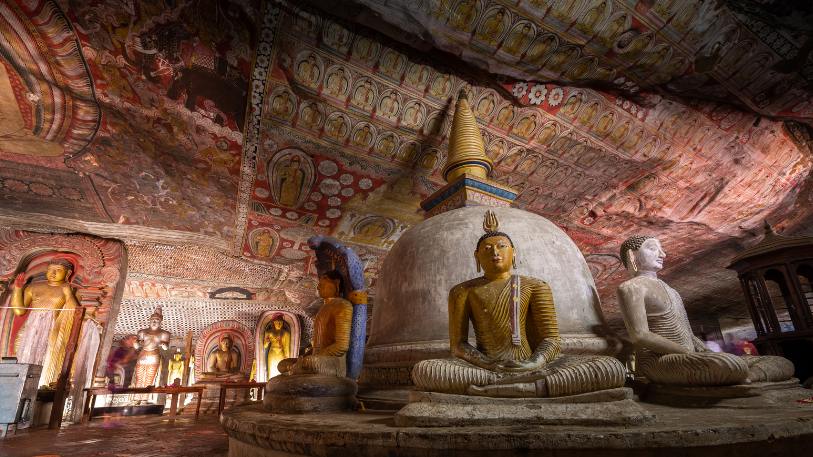
Dambulla Home / Dambulla Dambulla Location Type Area Dambulla Historical Matale District Dambulla: The Cultural and Spiritual Heart of Sri Lanka Located in the Central Province of Sri Lanka, Dambulla is a city rich in history, culture, and breathtaking landscapes. Known for its ancient cave temples, golden statues, and vibrant local markets, Dambulla is a must-visit destination for travelers exploring the cultural wonders of Sri Lanka. Why Visit Dambulla? 1. The Iconic Dambulla Cave Temple (Golden Temple) A UNESCO World Heritage Site, the Dambulla Cave Temple is one of the most famous and well-preserved Buddhist temples in Sri Lanka. Dating back over 2,000 years, this complex consists of five caves adorned with intricate murals, statues of Lord Buddha, and stunning frescoes covering more than 2,100 square meters. Highlights include: Over 150 Buddha statues, including a 15-meter-long reclining Buddha Breathtaking rock paintings depicting Buddhist stories A serene and spiritual atmosphere, perfect for meditation 2. Sigiriya Rock Fortress (Nearby Attraction) Just 20 km from Dambulla, the Sigiriya Rock Fortress is an architectural marvel built in the 5th century AD. Known as the Eighth Wonder of the World, it features: Frescoes of the Sigiriya Maidens Mirror Wall with ancient inscriptions Lion’s Paw Entrance leading to the summit Panoramic views of the surrounding jungles and villages 3. Pidurangala Rock: A Hiker’s Paradise For a less crowded alternative to Sigiriya, Pidurangala Rock offers a challenging hike with incredible sunrise and sunset views. The trek is short but steep, rewarding adventurers with panoramic vistas of Sigiriya and the surrounding countryside. 4. Dambulla Economic Center: The Heart of Sri Lanka’s Fresh Produce Dambulla is known as the agricultural hub of Sri Lanka, and the Dambulla Economic Center is the largest wholesale vegetable market in the country. Visiting the market offers a glimpse into the bustling trade of fresh produce, from tropical fruits to spices, and provides an authentic local experience. 5. Rangiri Dambulla International Cricket Stadium Cricket lovers can visit this scenic stadium, built around a natural lake. It is known for hosting international matches and offers a chance to witness Sri Lanka’s passion for cricket. 6. Minneriya National Park: Witness the Elephant Gathering A short drive from Dambulla, Minneriya National Park is home to the famous Elephant Gathering, where hundreds of elephants congregate near the Minneriya reservoir during the dry season (June to September). This is one of the largest wild elephant gatherings in the world and a must-see for nature enthusiasts. 7. Hot Air Ballooning Over Dambulla For a once-in-a-lifetime adventure, experience hot air ballooning over Dambulla’s lush landscapes, ancient ruins, and picturesque villages. The best time for this activity is during the dry season (November to April). 8. Traditional Village Tours Explore the authentic Sri Lankan countryside by taking a village tour. Activities include: Bullock cart rides Paddy field walks Traditional Sri Lankan cooking experiences Boat rides on scenic lakes This immersive experience allows visitors to connect with local culture and traditions. Best Time to Visit Dambulla The best time to visit Dambulla is from November to April, when the weather is dry and pleasant for sightseeing and outdoor activities. How to Get to Dambulla By Road: Dambulla is located 160 km from Colombo and can be reached in 3.5 to 4 hours by car or bus. By Train: The nearest train station is Habarana, about 30 km from Dambulla, from where you can take a taxi or bus. By Air: Domestic flights from Colombo to Sigiriya Airport offer a quicker way to reach Dambulla. Where to Stay in Dambulla Dambulla offers a range of accommodation options, from luxury eco-resorts to budget-friendly guesthouses. Whether you prefer a boutique hotel surrounded by nature or a comfortable stay in the city center, there are plenty of choices for every traveler. Experience the Magic of Dambulla From its ancient cave temples and historical landmarks to breathtaking landscapes and wildlife adventures, Dambulla is a destination that offers a perfect blend of culture, history, and nature. Whether you’re an adventure seeker, history lover, or spiritual traveler, Dambulla promises an unforgettable journey through Sri Lanka’s rich heritage. Related Tours Packages Tailor Made Tours Packages Mystical Sri Lanka Packages Legendary Ramayana Trail Packages Tranquility & Wellness Packages Luxury Golf Hideaway Tailor Made Tours Mystical Sri Lanka Legendary Ramayana Trail Tranquility & Wellness Luxury Golf Hideaway Click On Map to Navigate Captivating TripAdvisor Display Reviews
